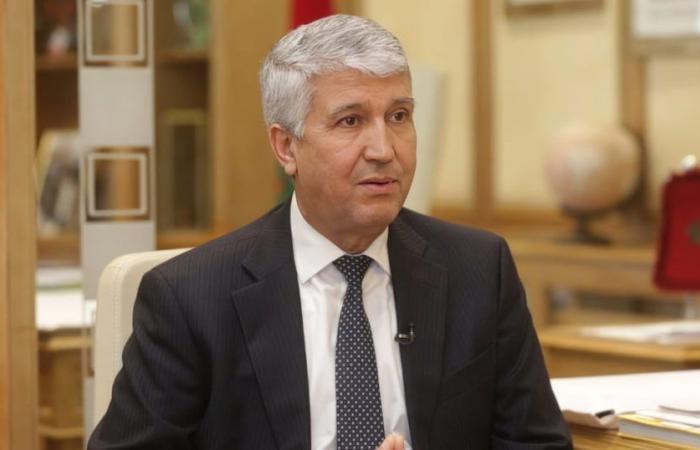Since its creation in 1986, the Agricultural Development Fund (FDA) has invested in programs that build the capacity of farmers, promote the use of advanced technologies and ensure optimal management of resources. More details on this financing mechanism with the Minister of Agriculture, Maritime Fisheries, Rural Development and Water and Forests, Mohammed Sadiki.
Le360: What are the objectives of the FDA? And how is it financed?
Mohammed Sadiq: The Agricultural Development Fund (ADF) is a special trust account established in 1986 as a strategic tool to encourage private investment in the agricultural sector by providing aid and incentives to farmers investing in the sector. It aims to guarantee equitable access to state incentives for all categories of farmers.
The incentives granted through the FDA target the animal and plant sectors and include upstream and downstream of the agricultural sectors, to achieve the objectives of the Generation Green strategy, defined at the level of the program contracts signed between the government and the inter-professional sectors. agricultural. The FDA also contributes to financing agricultural insurance and programs to mitigate extreme climate effects (drought, flood, hail).
Read also: Agriculture: why Morocco must better use rainwater to deal with water stress, according to an expert
The FDA’s resources are mainly made up of the general state budget, i.e. a percentage of 86%. The remaining 14% is made up of its own resources, mainly levies on customs duties on imports of certain products (fuels and food products).
What is the activity report of this fund in 2023?
FDA employment in 2023 reached 4,414 million dirhams (MDH), including 3,500 MDH (79%) for direct investment subsidies and 519 MDH (12%) for agricultural insurance. 60% of direct investment subsidies targeted localized irrigation projects, aimed at saving and valorizing irrigation water. The distribution of financial assistance is broken down by heading as follows:
| Section | Incentives disbursed in 2023 (in MDH) |
|---|---|
| Localized irrigation | 2.100 |
| Farm equipment (mechanization, agricultural greenhouses, anti-hail nets) | 315 |
| Intensification of animal production (genetic improvement, breeding buildings) | 317 |
| Fruit growing | 124 |
| Valuation units | 90 |
| selected seeds | 312 |
| Promotion, diversification des exportations | 171 |
| Laboratory analyzes | 64 |
| Flat-rate subsidy for aggregation | 6 |
| Total | 3.500 |
How will the FDA support agricultural projects in 2024 through its grant programs?
The new aid planned aims to further support farmers in the use of different production factors, upstream and downstream of the agricultural sectors. To this end, new aid will be granted to farmers for the use of certified seeds of food legumes, fodder crops, oilseed crops such as rapeseed and sunflower, as well as rice and potatoes, in addition to aid granted for certified cereal seeds.
In 2024, support for the use of solar pumping for localized irrigation projects will be put in place to encourage farmers to replace butane with this type of renewable energy in irrigation projects.
“Aid for agricultural product valorization units will be revised”
— Mohammed Sadiki, Minister of Agriculture.
The downstream citrus sector will benefit from aid for the export of citrus fruits to the European Union, the United Kingdom and African countries. Furthermore, the FDA will continue to support the construction and equipment of valorization units for different agricultural sectors, with a renewal of aid dedicated to the certification of plant products, livestock and beekeeping products obtained according to the method of organic production. Aid for agricultural product valorization units will be revised by improving certain rates and introducing new categories of units.
Is there an evaluation or monitoring process for projects funded by the FDA?
It should be noted that for the majority of subsidized operations, the request for support begins with an examination of the situation before implementation to ensure compliance with standards and the appropriateness of the project. At the end of this examination, an approval is issued to the farmer. After completion, the farmer who has pre-financed his project applies for the subsidy and the ministry’s teams carry out a materiality assessment before issuing the subsidy according to the rates and ceilings in force. Thus, although the act of investment is voluntary, this approach makes it possible to filter viable projects, make the necessary corrections and reject non-compliant projects.
“The department has a monitoring and a posteriori control system”
— Mohammed Sadiki, Minister of Agriculture.
Likewise, farmers undertake at the time of requesting the subsidy to maintain and promote their project for a period of 5 to 8 years, depending on the nature of the subsidy. Beyond this period, it is considered that projects mature and become sufficiently profitable that they are not abandoned without good reason. Furthermore, the department has a monitoring and a posteriori control system which ensures compliance with commitments, which may give rise to a request for restitution of the subsidy.
What are the plans to ensure the long-term sustainability of projects financed by the agricultural development fund?
To guarantee the long-term sustainability of projects financed by the Agricultural Development Fund, farmers undertake vis-à-vis the State to preserve and maintain the investment having benefited from the subsidy and to maintain it in a functional state for a period of 5 to 7 years depending on the type of investment.
Also, to ensure long-term sustainability of subsidized projects, for localized irrigation projects for example, the State conditions the acceptance of aid requests by a pumping authorization issued by the competent authorities, authorizing access at a determined volume or flow rate. A list of non-tolerated crops has also been established, including citrus fruits, avocado and watermelon.
And to benefit from aid for the installation of a recovery unit, an authorization for the installation of the unit is required, issued by the competent authorities, in order to control the impact of the installation on its environment.






